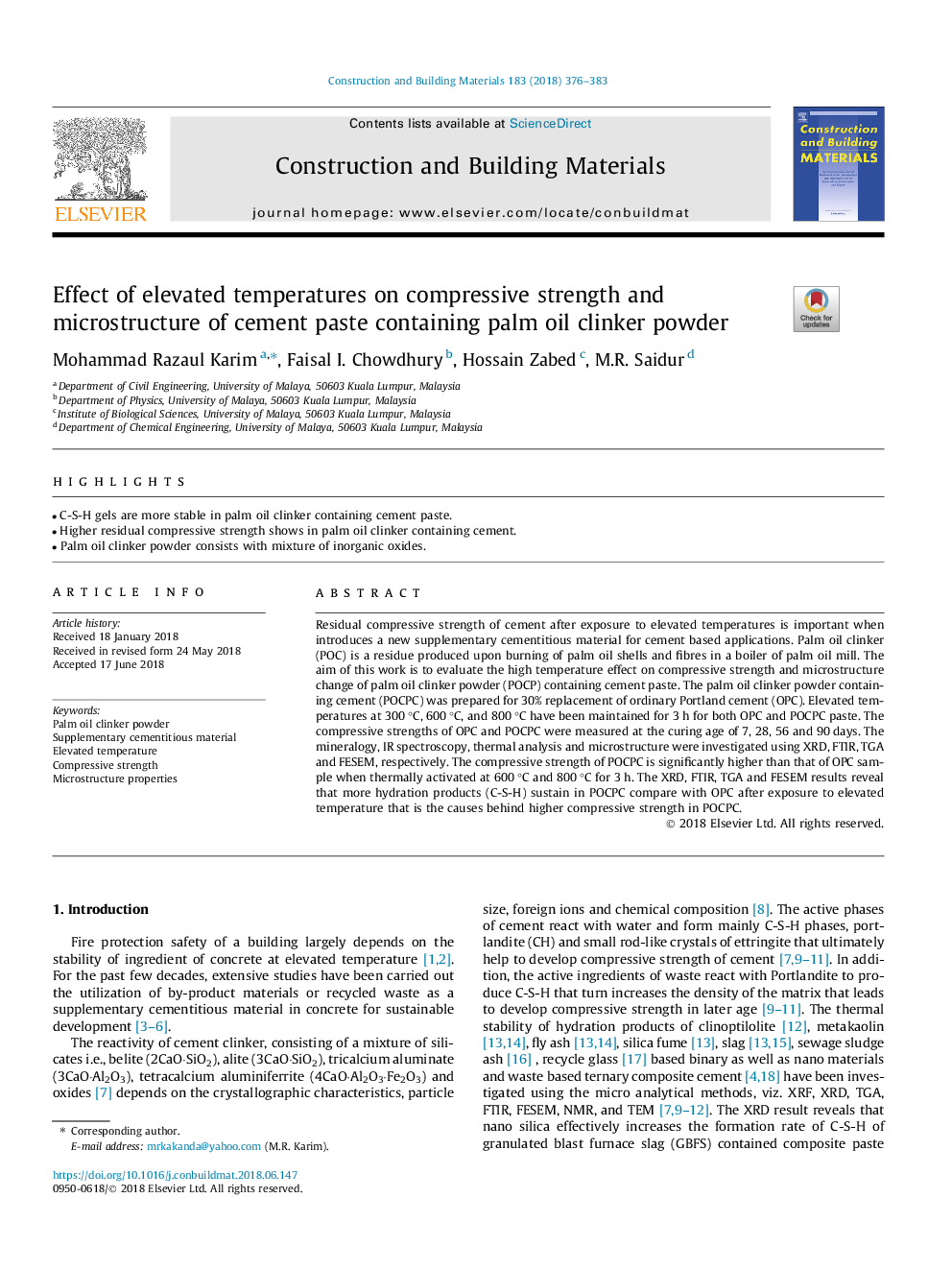| Article ID | Journal | Published Year | Pages | File Type |
|---|---|---|---|---|
| 6712192 | Construction and Building Materials | 2018 | 8 Pages |
Abstract
Residual compressive strength of cement after exposure to elevated temperatures is important when introduces a new supplementary cementitious material for cement based applications. Palm oil clinker (POC) is a residue produced upon burning of palm oil shells and fibres in a boiler of palm oil mill. The aim of this work is to evaluate the high temperature effect on compressive strength and microstructure change of palm oil clinker powder (POCP) containing cement paste. The palm oil clinker powder containing cement (POCPC) was prepared for 30% replacement of ordinary Portland cement (OPC). Elevated temperatures at 300â¯Â°C, 600â¯Â°C, and 800â¯Â°C have been maintained for 3â¯h for both OPC and POCPC paste. The compressive strengths of OPC and POCPC were measured at the curing age of 7, 28, 56 and 90â¯days. The mineralogy, IR spectroscopy, thermal analysis and microstructure were investigated using XRD, FTIR, TGA and FESEM, respectively. The compressive strength of POCPC is significantly higher than that of OPC sample when thermally activated at 600â¯Â°C and 800â¯Â°C for 3â¯h. The XRD, FTIR, TGA and FESEM results reveal that more hydration products (C-S-H) sustain in POCPC compare with OPC after exposure to elevated temperature that is the causes behind higher compressive strength in POCPC.
Keywords
Related Topics
Physical Sciences and Engineering
Engineering
Civil and Structural Engineering
Authors
Mohammad Razaul Karim, Faisal I. Chowdhury, Hossain Zabed, M.R. Saidur,
